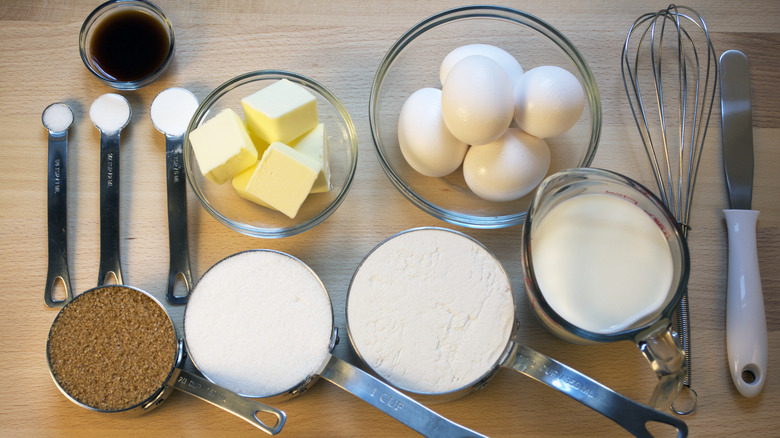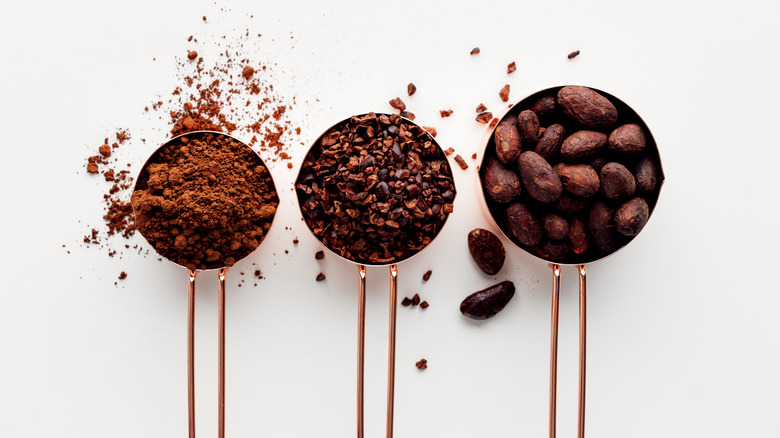Why You Should Never Use A Liquid Measuring Cup For Dry Ingredients
Unless you're Jennifer Garner and simply wake up with an urge to bake a new bread every morning (or just happen to have a particular penchant for baking), you probably see no need to have two sets of measuring cups in the kitchen. You couldn't possibly need both dry and liquid measuring cups if you're only going to use them to bake a pumpkin pie once a year, right?
Of course, when it comes to anything that involves baking, it's best not to meddle with the rules too much. So, if you're thinking that you can get away with using the same measuring cup to measure both flour and milk, you might be wrong. When 18 people were asked to measure flour in a liquid measuring cup and water in a dry one, Cook's Illustrated found that the measurements were way off. One cup of all-purpose flour when measured in a liquid measuring cup was off by 26% of what it would have been if it was correctly measured in a dry one.
Considering the mammoth effect that even a seemingly harmless little tweak can have in baking — so much so that entire bakes depend on the temperature of an egg or a stick of butter — it's best to leave the measuring of dry ingredients to dry cups and vice versa.
Dry and liquid measuring cups cannot be used interchangeably
Technically, one cup of a dry ingredient should be the same when measured in a dry measuring cup or a liquid one. However, Cooking Light finds that the weight of a dry ingredient differs greatly from a liquid one. One cup of liquid in a liquid measuring cup weighs about eight ounces whereas one cup of a dry ingredient like all-purpose flour amounts to only four and a half ounces in a dry measuring cup. Measure the flour in a liquid measuring cup and you'll have put double the amount of flour in your recipe!
Dry and liquid measuring cups are also designed to measure ingredients differently. When you're using a dry measuring cup to scoop flour, you're supposed to run a knife across the top to level the amount of flour that is packed in the cup (via Taste Of Home). A liquid measuring cup, on the other hand, is more like a tall jug with a spout on one end that is designed to measure liquid accurately without it spilling anywhere. If you add a dry ingredient to a tall liquid measuring cup, you would have no way to level the ingredient except by tapping it several times. Tapping the cup will settle the flour down, making you think that you need to add more flour to reach the required measurement. The result? Way more flour than your recipe requires. That's why it's best to leave the measuring of dry ingredients to the tool that's specifically designed to do so.

